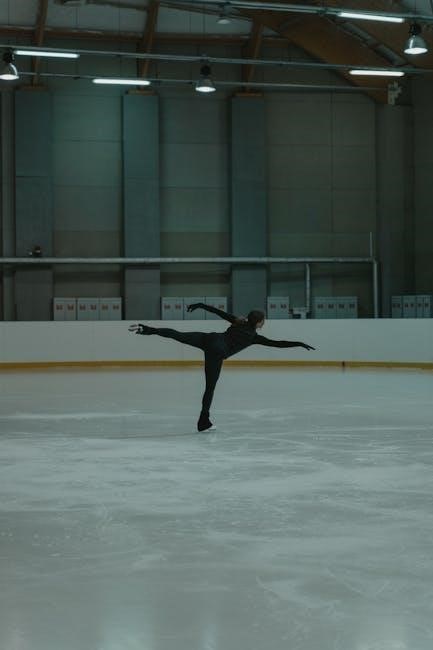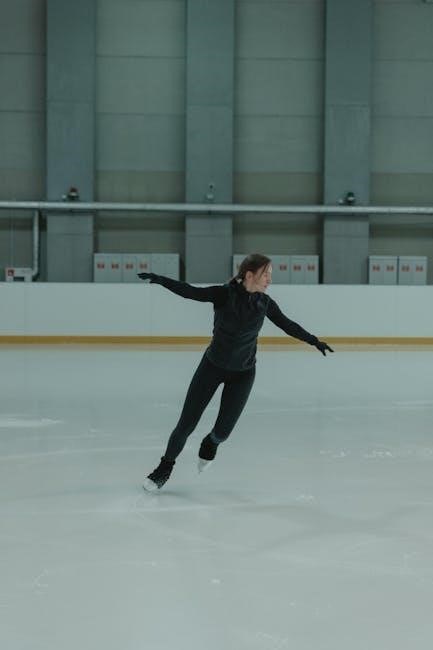Tension and Trauma Releasing Exercises (TRE) are a series of movements designed to help the body release stored tension and trauma. Developed by Dr. David Berceli, TRE activates the body’s natural tremor mechanism to promote relaxation and reduce stress. This self-help practice is gaining popularity for its effectiveness in addressing chronic pain, anxiety, and improving overall well-being.
What are Tension and Trauma Releasing Exercises (TRE)?
Tension and Trauma Releasing Exercises (TRE) are a series of simple, yet powerful movements designed to help the body release deep muscular tension and stored trauma. Created by trauma expert Dr. David Berceli, TRE works by activating the body’s natural tremor mechanism, which is a primal response to stress and trauma. These exercises, often detailed in downloadable PDF guides, involve gentle stretches and movements that fatigue specific muscle groups, encouraging the body to shake and release tension naturally. TRE is not only a tool for trauma recovery but also a self-help practice that promotes relaxation, reduces chronic pain, and enhances overall well-being. The exercises are accessible to anyone, making them a popular choice for individuals seeking holistic approaches to stress and trauma management.
The Origin and Development of TRE
Tension and Trauma Releasing Exercises (TRE) were developed by Dr. David Berceli, a trauma expert with extensive experience working in conflict zones and natural disaster areas. Observing how the body naturally responds to stress and trauma, Berceli created a series of exercises that mimic the primal tremor response, allowing the body to release stored tension. The exercises were designed to be simple and accessible, enabling individuals to manage trauma and chronic stress independently. Over time, TRE has evolved into a widely recognized practice, supported by downloadable PDF guides and resources that outline the exercises in detail. These guides have made TRE more accessible, helping people worldwide to embrace this natural, self-help approach to trauma and tension release.
The Purpose of TRE Exercises
The primary purpose of Tension and Trauma Releasing Exercises (TRE) is to empower individuals to release deep muscular tension and trauma stored in the body. By triggering the body’s natural tremor mechanism, TRE helps restore balance to the nervous system and reduce chronic stress. These exercises are designed to be a self-help tool, allowing individuals to manage their own tension and trauma independently. The goal is to create a safe and controlled environment for the body to release stored energy, promoting relaxation, reducing pain, and enhancing overall well-being. TRE is particularly beneficial for those seeking a natural, non-invasive approach to managing trauma and stress.

Theory Behind TRE Exercises
TRE activates the body’s tremor mechanism to release tension, utilizing the autonomous nervous system to enhance relaxation and improve heart rate variability naturally.
The Science of Trauma and Tension Release
Trauma and chronic tension are stored in the body as unresolved energy. TRE works by activating the body’s natural tremor mechanism, which releases this stored tension. The process engages the autonomous nervous system (ANS), promoting a shift from “fight-or-flight” to “rest-and-digest” states. This release reduces physical stress and emotional reactivity. The exercises stimulate the psoas muscle, a key indicator of stress, allowing deep relaxation. Scientific studies show improvements in heart rate variability (HRV), a marker of stress resilience. By mimicking the body’s natural response to shaking off tension, TRE provides a safe, self-regulated method to process trauma. This approach is backed by research demonstrating its effectiveness in reducing chronic stress and trauma symptoms, offering a powerful tool for long-term well-being.
How TRE Activates the Body’s Tremor Mechanism
TRE activates the body’s tremor mechanism through a series of specific exercises that target the psoas muscle and other core muscles. These exercises, detailed in TRE exercises PDF guides, are designed to induce mild fatigue in the muscles, triggering the body’s natural shaking response. This shaking, or tremoring, mimics the body’s instinctual way of releasing tension after a stressful event. The process involves gentle movements that stimulate the body’s tremor reflex, allowing it to release stored tension and trauma without conscious control. By engaging the body’s innate mechanism, TRE helps restore balance to the nervous system and promotes deep relaxation. The exercises are simple yet effective, making them accessible for individuals seeking to release chronic tension and improve overall well-being through this natural, self-regulated process.
The Role of the Autonomous Nervous System (ANS)
The Autonomous Nervous System (ANS) plays a crucial role in TRE exercises by regulating the body’s response to stress and tension. TRE helps balance the ANS, which comprises the sympathetic (“fight or flight”) and parasympathetic (“rest and digest”) systems. By activating the tremor mechanism, TRE reduces sympathetic dominance, often associated with chronic stress and trauma. This shift allows the parasympathetic system to take over, promoting relaxation and reducing anxiety. Studies and resources, such as TRE exercises PDF guides, highlight how this balance improves heart rate variability (HRV), a key indicator of stress resilience. The ANS’s role in TRE ensures that the body can effectively release stored tension and return to a state of equilibrium, enhancing overall mental and physical well-being. This natural process is a cornerstone of TRE’s effectiveness in managing trauma and chronic stress.

Benefits of TRE Exercises
TRE exercises reduce chronic tension, release trauma, and improve mental well-being by enhancing heart rate variability (HRV), promoting relaxation, and fostering resilience against stress and anxiety.
Physical Benefits: Reducing Chronic Tension and Pain

TRE exercises effectively reduce chronic tension and pain by releasing stored stress in the muscles. The tremor mechanism targets areas like the legs, hips, and lower back, promoting deep relaxation. Regular practice helps alleviate physical discomfort, improves posture, and enhances flexibility. By addressing the root cause of tension, TRE can significantly reduce chronic pain, allowing the body to heal and function more efficiently. This natural, drug-free approach is particularly beneficial for individuals dealing with long-term physical strain or injury. The exercises also improve circulation and reduce inflammation, further contributing to overall physical well-being. TRE’s ability to release deep muscular patterns of stress makes it an invaluable tool for managing and preventing chronic pain.
Mental and Emotional Benefits: Managing Trauma and Stress
TRE exercises offer profound mental and emotional benefits by helping individuals manage trauma and stress. By activating the body’s tremor mechanism, TRE allows the nervous system to release stored tension, promoting deep relaxation and reducing anxiety. This practice can alleviate emotional blockages and enhance resilience, enabling individuals to better cope with life’s challenges. The exercises also regulate the autonomous nervous system (ANS), fostering a balanced state of calm and alertness. Many practitioners report improved emotional stability, reduced symptoms of PTSD, and a greater sense of overall well-being. TRE provides a safe and natural way to process trauma, empowering individuals to release emotional pain and regain control over their mental health. Regular practice can lead to long-term emotional healing and a more grounded, peaceful state of mind.
Improving Heart Rate Variability (HRV)
TRE exercises have been shown to positively impact Heart Rate Variability (HRV), a key indicator of cardiovascular health and stress resilience. By activating the body’s tremor mechanism, TRE helps regulate the autonomous nervous system (ANS), which directly influences HRV. Higher HRV is associated with better stress management, emotional stability, and overall well-being. Studies suggest that regular TRE practice can increase HRV, indicating improved parasympathetic nervous system function. This leads to enhanced recovery from stress and trauma, making TRE a valuable tool for individuals seeking to improve their physiological and emotional health. The exercises provide a natural way to promote balance in the ANS, contributing to long-term heart health and emotional resilience. Improved HRV is a measurable benefit of TRE, offering tangible results for those committed to their practice.

How to Perform TRE Exercises
Performing TRE involves gentle warm-ups, specific exercises to fatigue muscles, and allowing the body to naturally tremor to release tension and trauma. Consistency yields best results.
Preparation and Warm-Up Exercises
Preparation and warm-up are essential before starting TRE exercises. Begin with gentle movements to loosen the muscles, focusing on the legs, hips, and lower back. These exercises help increase blood flow and prepare the body for the tremor response. Gentle stretching and light cardio, such as marching in place or leg swings, are often recommended. The warm-up should last about 10-15 minutes, gradually intensifying to fatigue the target muscle groups without causing strain. This phase is crucial as it sets the foundation for the main TRE exercises, allowing the body to transition smoothly into the tremor mechanism. Proper preparation ensures safety and maximizes the benefits of the practice, making it accessible for individuals of all fitness levels.
Step-by-Step Guide to TRE Exercises
TRE exercises are performed in a specific sequence to safely activate the body’s tremor mechanism. Start with standing knee lifts, bending one knee at a time to fatigue the legs. Follow with chest opens, stretching the arms wide to expand the chest. Next, perform a gentle forward fold to release tension in the spine. Then, lie on your back and bring knees to chest, rocking gently to engage the pelvis. Finally, extend your arms overhead and let your body naturally tremor, allowing stored tension to release. Each step is designed to prepare the body for the next, ensuring a safe and effective release of deep muscular tension. Regular practice of these exercises can lead to lasting relaxation and reduced stress.
Common Mistakes to Avoid During TRE Practice
One of the most common mistakes during TRE practice is attempting to force or control the tremors, which can hinder the body’s natural release process. Overexertion, especially in the early stages, can lead to discomfort or fatigue. Many individuals neglect to warm up properly, skipping essential preparation exercises that prevent strain. Others fail to follow the sequence, which is crucial for safely activating the tremor mechanism. Ignoring the body’s signals, such as pushing through pain instead of stopping, can also be counterproductive. Additionally, some practitioners rush the process, not allowing enough time for the tremors to develop naturally. It is important to embrace a gentle and patient approach, trusting the body’s innate wisdom to release tension at its own pace.

Case Studies and Research
Research highlights TRE’s effectiveness in reducing trauma symptoms and chronic pain, as demonstrated in studies and detailed in downloadable PDF guides.
Effectiveness of TRE in Reducing Trauma Symptoms
Studies and case studies demonstrate the effectiveness of TRE in reducing trauma symptoms by releasing deep muscular tension. Research published in 2024 highlights how TRE helps individuals process trauma, showing significant reduction in symptoms. The exercises activate the body’s tremor mechanism, allowing stored tension to release naturally. This process fosters relaxation, lowers stress levels, and improves emotional resilience. Many participants in TRE programs report improved mental clarity and reduced anxiety. The practice is particularly beneficial for those with chronic pain, as it addresses the physiological effects of trauma. By regulating the nervous system, TRE promotes long-term healing and well-being. Downloadable PDF guides provide detailed insights into these studies, offering evidence-based support for TRE’s efficacy in trauma recovery.
Studies on TRE and Chronic Pain Relief
Studies on TRE and chronic pain relief demonstrate its effectiveness in reducing discomfort and improving physical function. Research from 2020 highlights how TRE’s tremor mechanism releases deep tension, alleviating chronic pain. Participants reported significant reduction in pain levels and improved mobility. The exercises target the root cause of pain, often linked to stored trauma. By activating the body’s natural release process, TRE promotes healing without medication. Clinical observations show sustained relief, with regular practice enhancing overall well-being. Downloadable PDF guides detail these findings, offering practical insights for pain management. TRE’s holistic approach addresses both physical and emotional aspects of pain, making it a valuable tool for long-term relief.
TRE and Anxiety: Real-Life Success Stories
TRE has shown remarkable results in alleviating anxiety through its unique approach to releasing stored tension. Real-life stories highlight how individuals have reduced anxiety symptoms by practicing TRE regularly. For instance, a case study shared in a downloadable PDF guide details how a participant experienced a significant decrease in panic attacks and improved emotional regulation after incorporating TRE into their routine. The exercises help calm the nervous system, promoting relaxation and reducing cortisol levels. Many practitioners report feeling more grounded and better equipped to handle stress. These success stories underscore TRE’s potential as a natural, drug-free solution for managing anxiety. By addressing the physical manifestations of stress, TRE empowers individuals to reclaim control over their mental and emotional well-being.

TRE Exercises for Specific Needs
TRE offers tailored exercises for various needs, aiding trauma recovery, enhancing athletic performance, and alleviating chronic stress, providing a versatile tool for overall well-being.
TRE for Trauma Recovery
TRE is a powerful tool for trauma recovery, helping individuals release deep-seated tension stored in the body. By activating the body’s natural tremor mechanism, TRE allows the nervous system to reset and restore balance. This process can reduce symptoms of trauma, such as hyperarousal and emotional reactivity, promoting a sense of safety and calm. The exercises are gentle and accessible, making them suitable for those who may struggle with traditional talk therapy. Over time, TRE can enhance emotional resilience and improve overall well-being, offering a self-help approach to healing from trauma. Its effectiveness has been documented in studies, making it a recommended practice for trauma recovery.
TRE for Athletes and Physical Performance
TRE offers significant benefits for athletes by enhancing physical performance and accelerating recovery. The exercises help reduce chronic muscle tension, improving flexibility and range of motion. This can lead to better athletic performance and reduced injury risk. TRE also promotes balance and coordination by releasing deep-seated tension in the body. Athletes often report improved endurance and faster recovery times after incorporating TRE into their routine. Additionally, the practice helps regulate the nervous system, enhancing mental clarity and focus during training and competition. By addressing physical and mental stress, TRE complements traditional training methods, making it a valuable tool for athletes seeking optimal performance. Its ability to activate the body’s natural tremor mechanism ensures a holistic approach to physical and mental well-being. As a result, TRE is increasingly adopted by athletes worldwide to gain a competitive edge.
TRE for Chronic Stress and Burnout
TRE is a powerful tool for addressing chronic stress and burnout by targeting the body’s tension patterns. The exercises help regulate the Autonomous Nervous System (ANS), shifting from hyperarousal to relaxation. This balance reduces symptoms of stress and burnout, such as fatigue and emotional reactivity. TRE’s ability to release deep muscular tension also improves sleep quality, essential for recovery. By activating the body’s tremor mechanism, TRE allows the nervous system to reset, fostering resilience. Individuals experiencing burnout often report renewed energy and emotional stability after practicing TRE. Its simplicity and self-help nature make it accessible for those seeking sustainable stress management. Regular TRE practice can prevent burnout by promoting long-term relaxation and well-being, offering a natural solution to modern stressors. It complements other therapies, providing a holistic approach to managing chronic stress and enhancing overall quality of life.

Resources for TRE Exercises
Find downloadable PDF guides, online courses, and recommended books on TRE to deepen your practice. Join communities and forums to connect with practitioners and share experiences.
Downloadable PDF Guides for TRE
Downloadable PDF guides for TRE provide comprehensive instructions and illustrations for practicing the exercises. These guides often include step-by-step instructions, warm-up routines, and detailed explanations of each exercise. Many PDFs, such as those authored by Dr. David Berceli, focus on releasing tension and trauma through specific movements. They also explain the science behind TRE and its benefits for mental and physical health. Some guides are designed for specific needs, like trauma recovery or chronic pain relief. Additionally, PDF resources may include tips for modifying exercises to suit individual needs. These guides are ideal for self-practice and serve as valuable tools for deepening your understanding of TRE. They are widely available online and can be accessed through official TRE websites, forums, and educational platforms.
Online Courses and Tutorials

Online courses and tutorials provide structured learning opportunities for mastering TRE exercises. These programs, often led by certified TRE practitioners, include video demonstrations, interactive sessions, and downloadable materials. They cover topics such as the science behind TRE, proper techniques, and how to integrate the exercises into daily life. Many courses are designed for both beginners and advanced practitioners, offering a flexible way to learn at your own pace. Some platforms also include community forums or live Q&A sessions for additional support. These resources are ideal for those seeking a guided approach to understanding and benefiting from TRE. By enrolling in online courses, individuals can gain a deeper understanding of how to use TRE effectively for trauma recovery, stress relief, and overall well-being.
Recommended Books on TRE
A comprehensive guide to understanding and practicing TRE can be found in Dr. David Berceli’s book, Tension & Trauma Releasing Exercises (TRE). This book provides a detailed explanation of the science behind TRE, along with step-by-step instructions for performing the exercises. It is an essential resource for both beginners and experienced practitioners, offering insights into how TRE can address chronic tension, trauma, and stress. The book also explores the role of the autonomous nervous system and the body’s natural tremor mechanism. Additionally, it includes case studies and real-life success stories, making it a valuable tool for anyone looking to deepen their understanding of TRE. For those seeking a practical and evidence-based approach to trauma recovery, this book is a must-read.
Communities and Forums for TRE Practitioners
Connecting with others who practice TRE can enhance your journey and provide valuable support. Online forums and communities, such as the Defense Forum, offer a space to share experiences, ask questions, and learn from others. These platforms often include downloadable resources like PDF guides and articles to deepen your understanding of TRE. Additionally, social media groups dedicated to TRE bring practitioners together, fostering a sense of belonging and motivation. Many communities host webinars, workshops, and Q&A sessions with certified TRE instructors, offering practical tips and insights. Engaging with these networks can help you stay updated on the latest research and techniques, ensuring you get the most out of your TRE practice. Joining a community can also provide encouragement and accountability as you explore the benefits of TRE for trauma recovery and stress relief.
TRE offers a powerful, accessible method to release tension and trauma effectively, fostering resilience. Explore downloadable guides and resources to embark on your healing journey today.
The Future of TRE in Trauma and Tension Release
The future of TRE holds promise as a leading method for trauma and tension release. With increasing research and global adoption, TRE is expected to become a mainstream therapeutic approach. Its simplicity and effectiveness make it accessible to diverse populations, from athletes to trauma survivors. As more studies validate its benefits, TRE may integrate into healthcare systems worldwide, offering a natural, drug-free solution for chronic stress and pain. Online resources, such as downloadable PDF guides, will continue to play a key role in spreading TRE practices, ensuring its availability to anyone seeking holistic well-being. This non-invasive technique has the potential to revolutionize how we manage trauma and tension in the modern world.

Encouragement to Try TRE Exercises
TRE exercises offer a powerful, natural way to release tension and trauma, making them an excellent addition to your wellness routine. With downloadable PDF guides and online resources readily available, it’s never been easier to get started. TRE is accessible to everyone, regardless of fitness level or prior experience. By incorporating TRE into your life, you can take the first step toward reclaiming your body’s natural ability to heal and relax. The exercises are simple, effective, and can be done in the comfort of your own home. Embrace this empowering practice and discover how TRE can help you release deep-seated tension and improve your overall well-being. Take the initiative to try TRE today and experience the transformative benefits for yourself.
Final Thoughts on the Importance of TRE
TRE exercises represent a groundbreaking approach to managing tension and trauma, offering individuals a simple yet powerful tool to reclaim their health. By leveraging the body’s innate tremor mechanism, TRE empowers people to release deep-seated stress and tension, fostering a state of natural relaxation and balance. The availability of downloadable PDF guides and online resources makes TRE accessible to anyone, ensuring that this life-changing practice can reach those who need it most. With its focus on self-help and holistic well-being, TRE has the potential to transform lives by addressing the root causes of chronic pain, anxiety, and trauma. Embracing TRE as part of your wellness routine can lead to profound improvements in both physical and emotional health, helping you achieve a more resilient and balanced life.

Leave a Reply
You must be logged in to post a comment.